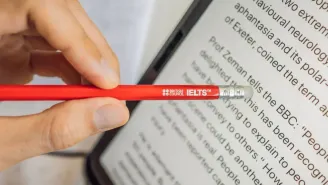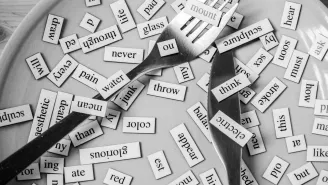A Bar At The Folies Reading Answers Passage
A Bar At The Folies Reading Answers Passage
Paragraph A. One of the most critically renowned paintings of the 19th-century modernist movement is the French painter Edouard Manet’s masterwork, A Bar at the Folies. Originally belonging to the composer Emmanuel Chabrier, it is now in the possession of The Courtauld Gallery in London, where it has also become a favourite with the crowds.
Paragraph B. The painting is set late at night in a nineteenth-century Parisian nightclub. A barmaid stands alone behind her bar, fitted out in a black bodice that has a frilly white neckline, and with a spray of flowers sitting across her décolletage. She rests her hands on the bar and gazes out forlornly at a point just below the viewer, not quite making eye contact. Also on the bar are some bottles of liquor and a bowl of oranges, but much of the activity in the room takes place in the reflection of a mirror behind the barmaid. Through this mirror, we see an auditorium bustling with blurred figures and faces: men in top hats, a woman examining the scene below her through binoculars, another in long gloves, even the feet of a trapeze artist demonstrating acrobatic feats above his adoring crowd. In the foreground of the reflection a man with a thick moustache is talking with the barmaid.
Paragraph C. Although the Folies (-Bergère) was an actual establishment in late nineteenth-century Paris, and the subject of the painting was a real barmaid who worked there, Manet did not attempt to recapture every detail of the bar in his rendition. The painting was largely completed in a private studio belonging to the painter, where the barmaid posed with a number of bottles, and this was then integrated with quick sketches the artist made at the Folies itself.
Paragraph D. Even more confounding than Manet’s relaxed attention to detail, however, is the relationship in the painting between the activity in the mirrored reflection and that which we see in the unreflected foreground. In a similar vein to Diego Velazquez’ much earlier work, Las Meninas, Manet uses the mirror to toy with our ideas about which details are true to life and which are not. In the foreground, for example, the barmaid is positioned upright, her face betraying an expression of lonely detachment, yet in the mirrored reflection, she appears to be leaning forward and to the side, apparently engaging in conversation with her moustachioed customer. As a result of this, the customer’s stance is also altered. In the mirror, he should be blocked from view as a result of where the barmaid is standing, yet Manet has re-positioned him to the side. The overall impact on the viewer is one of a dreamlike disjuncture between reality and illusion.
Paragraph E. Why would Manet engage in such deceit? Perhaps for that very reason: to depict two different states of mind or emotion. Manet seems to be conveying his understanding of the modern workplace, a place – from his perspective – of alienation, where workers felt torn from their ‘true’ selves and forced to assume an artificial working identity. What we see in the mirrored reflection is the barmaid’s working self, busy serving a customer. The front-on view, however, bears witness to how the barmaid truly feels at work: hopeless, adrift, and alone.
Paragraph F. Ever since its debut at the Paris Salon of 1882, art historians have produced reams of books and journal articles disputing the positioning of the barmaid and patron in A Bar at the Folies. Some have even conducted staged representations of the painting in order to ascertain whether Manet’s seemingly distorted point of view might have been possible after all. Yet, while academics are understandably drawn to the compositional enigma of the painting, the layperson is always likely to see the much simpler, more human story beneath. No doubt this is the way Manet would have wanted it.
Let’s explore the questions and answers of A Bar At The Folies Reading passage.
Check out the IELTS Reading Practice Test 2025 PDFs
A Bar At The Folies Reading Answers with Sample Questions
Have you read the passage? Now, take the test and find A Bar At The Folies Reading Answers! Try to answer these questions by yourself before you sneak a peek at the answers given below.
Check Out Top 30 IELTS Reading Practice Test Questions with Answers
Below are some top 30 free IELTS Reading Practice test online questions with detailed answers to enhance your IELTS preparation online. We have provided sample passages for each test type for your reference.
- What Is Exploration Reading Answers
- Effects Of Noise Reading Answers
- The Discovery Of Baby Mammoth Reading Answers
- The Dead Sea Scrolls Reading Answers
- The Ring-Tailed Lemur Reading Answers
- Why We Need To Protect Polar Bears Reading Answers
- Nutmeg A Valuable Spice Reading Answers
- What Is Meaning Reading Answers
- Cutty Sark Reading Answers
- The Step Pyramid Of Djoser Reading Answers
- South Pole Adventurer Reading Answers
- The Future Of Work Reading Answers
- Ambergris Reading Answers
- Trees In Trouble Reading Answers
- Could Urban Engineers Learn From Dance Reading Answers
- The Flavour Of Pleasure Reading Answers
- The Value Of A College Degree Reading Answers
- Why You Should Delegate Tasks To Team Members Reading Answers
- Corporate Social Responsibility Reading Answers
- Forest Management In Pennsylvania USA Reading Answers
- Making Time For Science Reading Answers
- The Power Of Play Reading Answers
- Coastal Archaeology Of Britain Reading Answers
- How The Other Half Thinks Reading Answers
- Changes In Reading Habits Reading Answers
- The Forgotten Forest Reading Answers
- When Conversations Flow Reading Answers
- Attitudes Towards Artificial Intelligence Reading Answers
- The Ingenuity Gap Reading Answers







